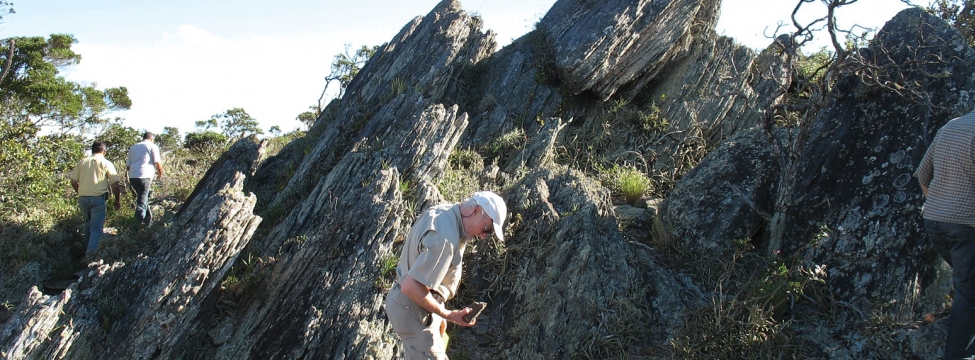To serve you better, our new website displays information specific to your location.
Please visit the site and bookmark it for future use.
Itabirite iron ore bodies: Generic geotechnical models
SRK has recently been involved at the feasibility and pre-feasibility level studies on a number of large-scale iron ore projects in west and central Africa and Brazil. Experience across these locations has highlighted a number of similarities that should be considered when generating a geotechnical model in itabirites.
In the weathered horizon, itabirites are characterised by strong iron bands and weaker silica bands resulting in a significant degree of anisotropy, where materials react differently to stresses applied in the direction of banding. It is therefore important to determine if this banding is consistent in terms of direction, which can often be seen to run parallel to the footwall contact if this contact is conformable or of a similar nature. By contrast, material that is unweathered or strongly foliated can be very strong and produce massive block sizes, intersected by unfavourable discontinuity sets.
The process of ore formation and depth of leaching can have a significant impact on the state of the silica banding within the itabirites and their subsequent geotechnical behaviour, as well as the behaviour of the surrounding waste rocks. The itabirites can form a boundary protecting the surrounding waste rock from the processes involved in the ore formation. For example, in itabirite deposits in Guinea, there is a strong correlation between the friability of the itabirite and the degradation of the surrounding phyllitic waste rocks.
Due to the massive size of these itaboritic ore bodies, and the drilling problems associated with them particularly in tropical regions, it is often difficult to gain the desired degree of structural information. Phyllitic and ampholitic marker horizons within the itabirites can be seen on geophysical gamma-gamma logs and can be correlated between boreholes which can prove useful in interpreting large-scale macro structure and determining lithological offsets, particularly where there is little surface exposure.
Alice Jack: ajack@srk.co.uk
|
You can download a PDF of the entire |
PDF
A4 |
PDF
Letter |
|
|
|
Our newsletters focus on specific areas of interest to earth resource professionals and clients. Each is available as an Adobe Acrobat PDF file. If you don't already have Adobe's PDF reader, you can download it free.
![]()


